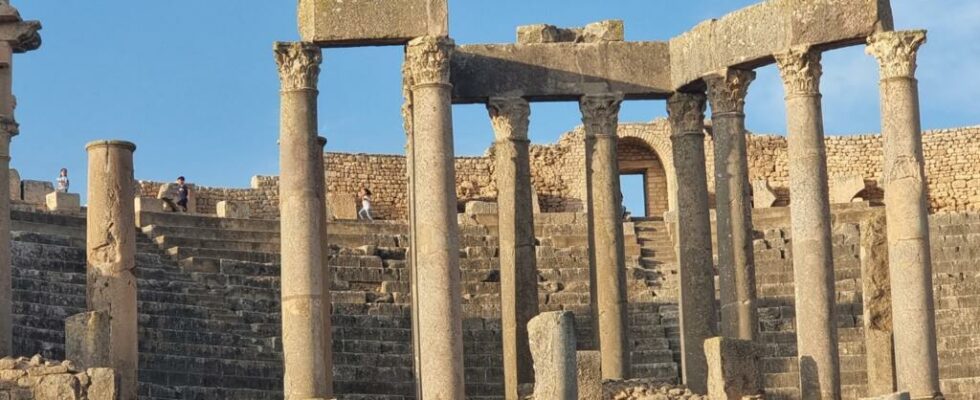In Tunisia, with more than 3000 years of history and different civilizations that have been established, the country is a treasure for archaeologists. Archaeological excavations are underway in several sites, notably thanks to Tunisian-French cooperation. Dougga, in the northwest of the country, is first a Numidian capital, then a Roman, Byzantine and Islamic city. The remains of an entire ancient city are still present there at 571 meters above sea level.
2 mins
With our correspondent in Dougga, Lilia Blaise
Between the children playing in the open-air theater and the olive trees planted for centuries between the stones, a group of archaeologists takes inventory of the finds from the latest excavations on the site of Dougga, one of the Numidian and Roman cities the best preserved in North Africa classified by UNESCO.
Haitham Abidi heritage advisor, arranges metal objects found on the site. “ We have practically excavated 1/10th – even less – of the site, but still, there are things to discover in Dougga. Now I am making an inventory of the metal objects discovered during ancient excavations in the Dolmen necropolis “, he specifies.
Nearly 600 sculptures found in Dougga
Chloé Damel, doctoral student in Roman archaeology, came to finish her thesis, she is interested in sculptures already exhumed, but little studied. “ Most of the sculptures that are kept here were found more than a century ago, she explains. So, we find everything, unfortunately we don’t only have rare portraits of emperors, otherwise we have a lot of statues of representations of deities or representations of mythological characters which adorned different rooms, different spaces, especially houses, the terms , the sanctuaries. »
Nearly 600 sculptures were found on the site, around thirty of which are exhibited at the Bardo Museum in Tunis, pending the creation of a museum in Dougga to better promote the new discoveries.
The site has been preserved at different times, notably during the Byzantine era, since part of the forum was surrounded by a fortress, notably the Capitol. But there are still many areas yet to be searched and discovered. For example, the bazina is a Punic-Numidian monument, probably from the end of the 4th century, third century and up to the 1st century BCE. And there, we have bone piles, therefore burials, but the skeletons were arranged along the walls of the rooms and this is completely new for Dougga.
Véronique Brouquier-Reddé, French archaeologist
Also readHistorical objects in Tunisia: the statue of Bourguiba returned to its original place in 2016 [2/4]
